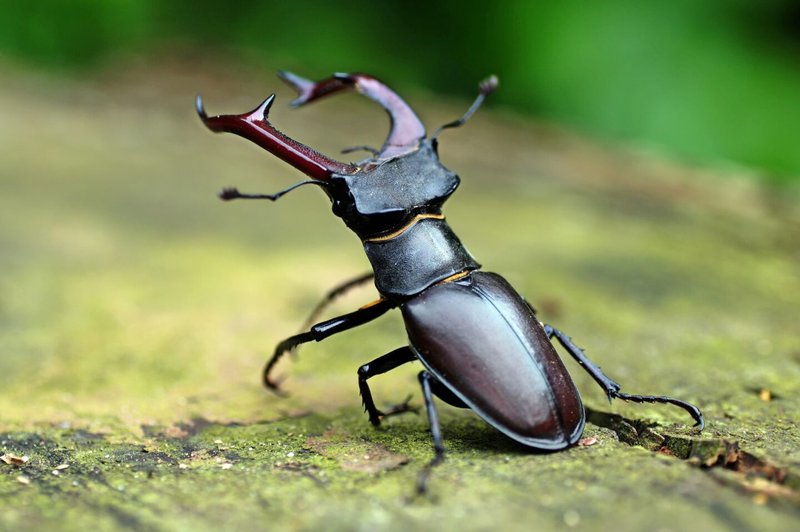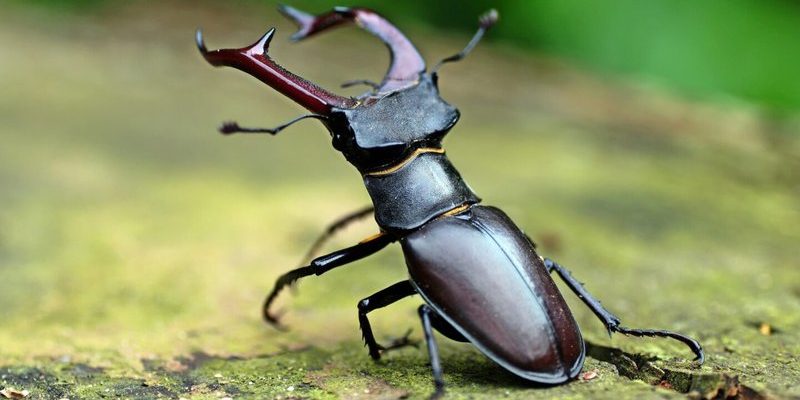
Imagine sitting across from a friend at your favorite coffee shop, discussing all the quirky creatures that inhabit our planet. You might mention how the stag beetle has captivated entomologists, nature lovers, and even casual onlookers. Whether you’re a budding entomologist or just someone who’s curious about the wonders of nature, there’s a lot to discover about these beetles. So, let’s dive into ten surprising facts about the stag beetle!
1. A Diverse Family of Beetles
Stag beetles belong to the family Lucanidae, which has over 1,200 species worldwide! This family is diverse, showcasing various shapes, sizes, and colors. While most people think of the large, impressive males with their gigantic jaws, females are equally important. They often don’t have those exaggerated mandibles and can be quite different in appearance.
You might be wondering what makes these beetles so special. Their adaptations allow them to thrive in various environments, from forests to gardens. Some species, such as the European stag beetle (Lucanus cervus), can even be found in suburban areas, making them more accessible to those of us who might not be venturing deep into the woods.
2. The Stunning Jaws of the Males
One of the most recognizable features of stag beetles is their jaw or mandible shape. The males possess impressive, antler-like jaws, which they use for fighting other males during the mating season. Think of it like a jousting match—these beetles clash to determine who gets to mate with a female.
Interestingly, the size of the mandibles can indicate a male’s fitness. Larger mandibles often help them win battles, which can be crucial for reproductive success. Picture this: a male stag beetle with massive jaws is strutting his stuff, and another smaller beetle backs down, knowing he doesn’t stand a chance. It’s nature’s way of sorting out the strong from the weak!
3. A Fascinating Life Cycle
The life cycle of a stag beetle is quite captivating. It starts as an egg, which hatches into a larva. This larval stage can last for several years, during which they feed on decaying wood and plant matter. This stage is crucial because it helps break down organic material, enriching the ecosystem.
When they mature, the larvae pupate, eventually transforming into adult beetles. Adult stag beetles can live for several months to even a few years, depending on the species and environmental conditions. This long larval stage is a surprising fact that highlights their adaptability and importance in their habitat.
4. Not Just About Fighting
While it’s easy to associate stag beetles with their fierce battles, there’s more to their behavior. They are also known to engage in *courtship rituals*. It often involves the male waving his mandibles and performing dance-like movements to attract a female. This elaborate display is a bit like a dance-off in the insect world!
Interestingly, these beetles rely heavily on pheromones to communicate during mating season. So, while it might seem like all brawn, there’s also a mix of charm and finesse in their interactions.
5. Historical Significance
Stag beetles have been part of human culture for centuries. In Japan, for instance, they’re not just admired for their looks—they are bred and kept as pets, much like tropical fish. They symbolize strength and are even featured in traditional artworks and crafts.
In ancient civilizations, these beetles were often associated with courage. The ancient Greeks, for example, saw the stag beetle as a creature that embodies tenacity, making it a symbol of bravery among warriors. It’s fascinating how a simple insect can carry such weight in history!
6. The North American Stag Beetle
You might think that stag beetles are exclusive to Europe or Asia, but they’re also found in North America. The Eastern Hercules beetle is a prime example and is known for its impressive size and strength. These beetles can grow up to 7 inches in length, including their horns!
Their larvae typically develop in decaying trees and logs, making them essential for breaking down wood in their environment. If you ever spot one of these giant beetles, consider it an honor; they’re not the easiest to find in the wild!
7. The Importance of Habitat
Habitat plays a vital role in the survival of stag beetles. They thrive in forests with plenty of decaying wood, which provides food for their larvae. However, urbanization and habitat loss pose a significant threat to these creatures.
Conservation efforts are essential to protect their habitats. Simple actions like planting native trees and reducing pesticide use can help maintain healthy ecosystems for stag beetles and other wildlife. Remember, every little bit helps in preserving these fascinating creatures!
8. Stag Beetles in Art and Culture
Throughout history, stag beetles have inspired artists, poets, and thinkers. Their striking appearance and unique behaviors make them a popular subject in various forms of art. From traditional Japanese prints to modern sculptures, these insects have captured the imagination of many.
In literature, they often symbolize strength and resilience. You could say that stag beetles aren’t just remarkable creatures in the natural world; they also hold a special place in human culture and creativity.
9. The Role of Stag Beetles in Ecosystems
Stag beetles play a crucial role in their ecosystems. By feeding on decaying wood, they help break down organic matter, recycling nutrients back into the soil. This process is vital for plant health and overall ecosystem balance.
Without insects like the stag beetle, our forests would struggle to thrive. It’s a reminder that even the smallest creatures can have a big impact on their environment.
10. Conservation Challenges and Efforts
Despite their hardy nature, stag beetles face various challenges. Habitat loss from deforestation, urban development, and climate change all threaten their populations. Conservation groups are working tirelessly to raise awareness and implement strategies to protect these beetles and their habitats.
You can get involved, too! Supporting local conservation efforts, planting native gardens, and spreading the word about the importance of stag beetles can make a real difference. Here’s the thing: every small effort counts in preserving these enchanting creatures for future generations.
In conclusion, the stag beetle is more than just an interesting insect—it’s a vital part of our ecosystem with a remarkable life story. From their impressive jaws to their fascinating life cycle and cultural significance, these beetles highlight the beauty and complexity of nature. Next time you come across a stag beetle, take a moment to appreciate all the things you now know about this extraordinary creature!

